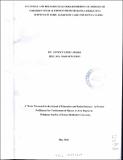| dc.description.abstract | Clubfoot (Congenital Talipes Equinovarus) is a condition in which the child is born with the hind foot adducted, flexed and inverted inwards. Doctors are not sure what causes clubfoot 'even though once neglected it results in significant impairment in body structure and function and may result in activity limitations and participation restrictions. For medical professionals, clubfoot is a clearly defined physical impairment or challenge. However, for guardians and children presenting with the condition, it is rarely defined. In Kenya physical di ability elates religious and cultural implications that prevent the guardians from taking their children for corrective services. In Embu County the situation is no different as the medical records indicate that many guardians fail to take their children for corrective services in Embu Clubfoot Care for Kenya Clinic, though the services are offered for free. The aim of 'this study was to find out whether there are cultural and religious factors that prevent the guardians from taking their children for corrective services and whether religion contributes towards clubfoot correction. The study was done in Embu Clubfoot Care for Kenya clinic which is situated in Embu Level Five Hospital. The target population was the guardians who brought their children for corrective services. At the time of this study the number of guardians according to the medical records at the clinic was three hundred and eighty. Out of this number fifty guardians were interviewed during the month of December 2014. Forty two were interviewed at the clinic while eight were in interviewed in their homes, two guardians from each of the four sub-counties of Embu County. A guardian's forum was conducted where they shared their views. This study used descriptive research design. Data collection was by use of questionnaire for the guardians and medical personnel and scheduled interviews. At one time the researcher had an open forum with guardians where their shared their experiences freely. Data analysis has been presented through descriptive statistics. This helped to describe the cultural and religious factors that make the guardians in not being clinic compliant. During the study it came out that there were religious and cultural factors .which prevented the guardians of children born with clubfoot from taking their children for corrective services. The major factor that came out in religion was the perceived causation of clubfoot. In culture the major reason was stigmatization from the family members, places of worship (churches and mosques), and the general public. The study also revealed that religion was contributing positively towards clubfoot management. The study contributes to our understanding of clubfoot in Kenya and the wider African continent. Recommendations made included increasing awareness and advocacy especially through the mass media, church bulletins and possibly through the social media. | en_US |

